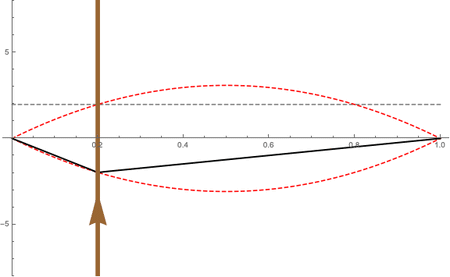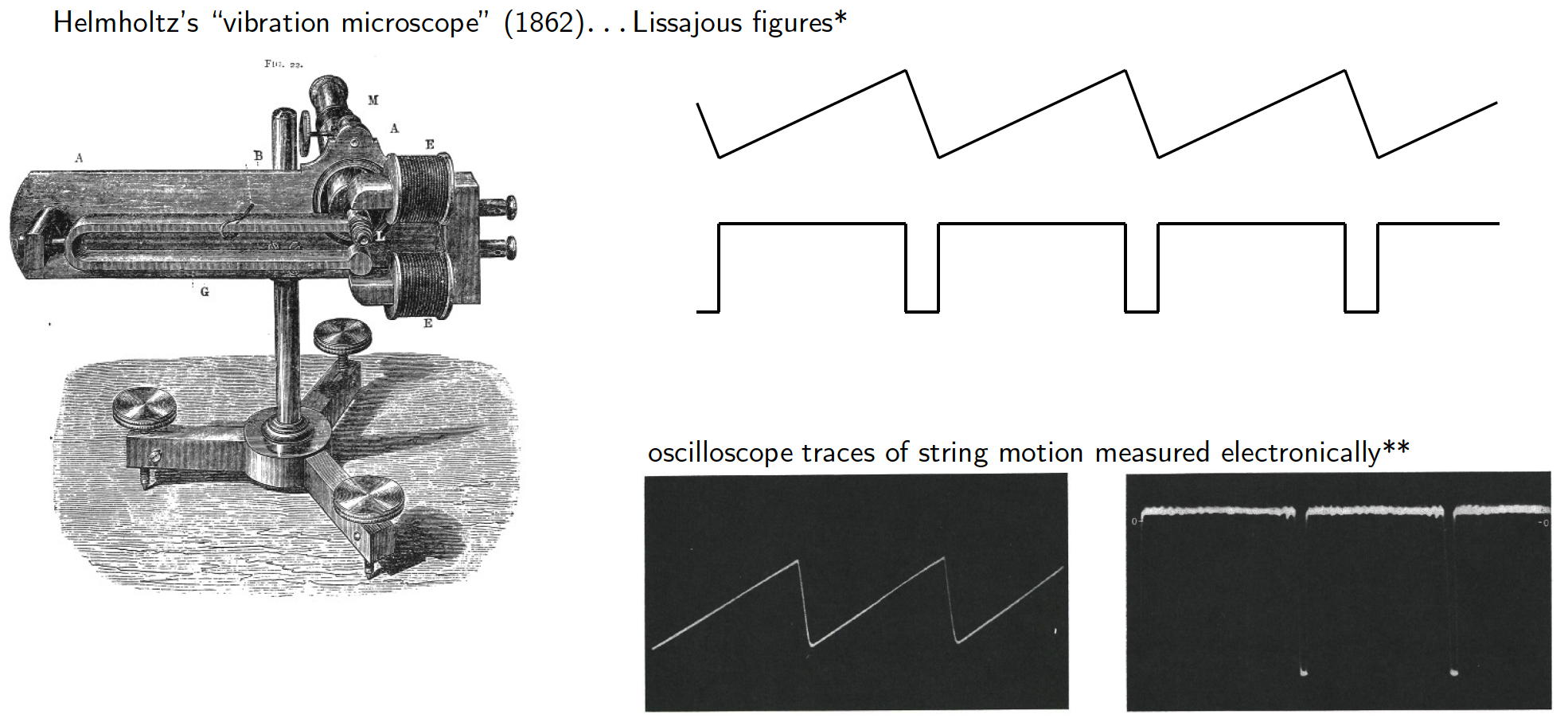The Bowed String (Violin) The motion of the bowed string (violin) is very different from the plucked string (guitar) and the struck string (piano). The plucked and struck strings are both initial condition problems; that is the string is given an initial displacement or velocity, after which the string vibration is a transient with the motion decaying with time. The bowed string is a system driven by a self-sustained friction oscillator. The details of this motion are considerably more complicated than the Fourier Series approach with initial conditions.
 The interaction between the bow and the string is called a "stick-slip" mechanism -- the rosin on the bow hair is sticky with a high value of static friction. The bow drags the string along, in the transverse direction, until the restoring force due to the string tension is greater than the static friction, and the string "slips" moving back toward equilibrium in the opposite direction that the bow is moving. The string overshoots its equilbrium and when it reaches its extreme position it is caught and "sticks" to the bow which drags it forward again. As this process repeats itself, the string maintains a triangular shape, with the apex of the triangle racing in a counter-clockwise direction and following an envelope that has the shape of half a sine function. This is illustrated in the animation at right: the brown line with the upwards traveling arrow represents the direction and speed of the bow. The apex of the triangle makes one round trip at the fundamental frequency of the string; if the string is playing an A 440 Hz, the triangle races around in a clockwise direction 440 times per second.
The interaction between the bow and the string is called a "stick-slip" mechanism -- the rosin on the bow hair is sticky with a high value of static friction. The bow drags the string along, in the transverse direction, until the restoring force due to the string tension is greater than the static friction, and the string "slips" moving back toward equilibrium in the opposite direction that the bow is moving. The string overshoots its equilbrium and when it reaches its extreme position it is caught and "sticks" to the bow which drags it forward again. As this process repeats itself, the string maintains a triangular shape, with the apex of the triangle racing in a counter-clockwise direction and following an envelope that has the shape of half a sine function. This is illustrated in the animation at right: the brown line with the upwards traveling arrow represents the direction and speed of the bow. The apex of the triangle makes one round trip at the fundamental frequency of the string; if the string is playing an A 440 Hz, the triangle races around in a clockwise direction 440 times per second.
The YouTube video below shows high-speed video of a bowed string; once the bow begins moving, the stick-slip motion of the string is seen, and the triangular pulse begins racing in a counter-clockwise direction.
Video source: ViolinBOW Youtube Channel
 The counter-clockwise motion of the string is referred to as Helmholtz Motion because Helmholtz was the first person to observe it in 1862 using his "oscillation microscope" and Lissajous figures.[1] The figure below shows the "oscillation microscope" that Helmholtz used along with his sketched observations of the motion of a single point on the bowed string; the triangle motion represents the displacement of a point on the string as a function of time, and the rectangular pulses represent the velocity of the same point.[1] The black photographs are more recent oscilloscope traces of the string motion using an electronic sensor.[2]
The counter-clockwise motion of the string is referred to as Helmholtz Motion because Helmholtz was the first person to observe it in 1862 using his "oscillation microscope" and Lissajous figures.[1] The figure below shows the "oscillation microscope" that Helmholtz used along with his sketched observations of the motion of a single point on the bowed string; the triangle motion represents the displacement of a point on the string as a function of time, and the rectangular pulses represent the velocity of the same point.[1] The black photographs are more recent oscilloscope traces of the string motion using an electronic sensor.[2]
